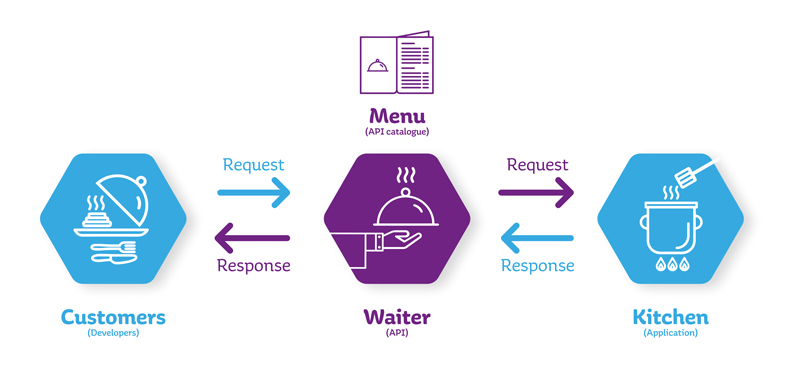The acronym API stands for Application Programming Interface. An API is essentially an interface that enables applications to communicate with one another.
What is an API?
As Jérémy Mésière, Middleware Architect at Manutan points out, "there are quite a few analogies that help to explain an API in practical terms. One of the best ways to illustrate the concept of an API is by using the analogy of a restaurant waiter. The waiter represents the interface between the customer (the developer) and the kitchen (the application). The customer, who is unfamiliar with the restaurant's dishes, relies on the menu (API catalogue) to place an order with the waiter, who then forwards the order to the kitchen."

More specifically, an API is a programming interface offering a set of procedures and functions to software or computer programs via a software library or web service.
The principle of an API is to provide the tools required to resolve an issue, without disclosing the details of its implementation. In turn, developers can use a program without having to worry about its complex operation.
Two practical examples of APIs within procurement
Whether in procurement or any other field, APIs rely on the exchange of information have numerous potential applications. Here are a few examples within procurement:
- Search360: Easy access to bids from suppliers
A prime example is the next-generation e-procurement solution co-developed by Ivalua and Manutan: Search360. This solution retrieves static catalogue information uploaded to the user's solution, as well as dynamic information provided by suppliers through a product search API. Users therefore benefit from a single interface to consult their suppliers' static and dynamic catalogues in real time. By using APIs, Search360 ensures an optimal user experience and saves time for users when they perform searches.
- Speeding up exchanges between customers, suppliers and manufacturers
Suppliers can also link up with their manufacturers in order to automate and speed up workflows. For example, when a customer places an order on a supplier's website, a purchase order is automatically sent via an API to the manufacturer, which then automatically sends a dispatch notice to the supplier when the product has been dispatched for delivery.
Regardless of whether information is submitted or retrieved from data, the use of APIs in B2B purchasing looks likely to bring marked improvements. In turn, the issue of securing data will continue to gather momentum.
Lastly, these live information exchanges make it possible to automate processes with low added value, coupled with access to quality information as exchanges are performed in real time. Alongside all the other benefits, this saves a tremendous amount of time for procurement teams.







